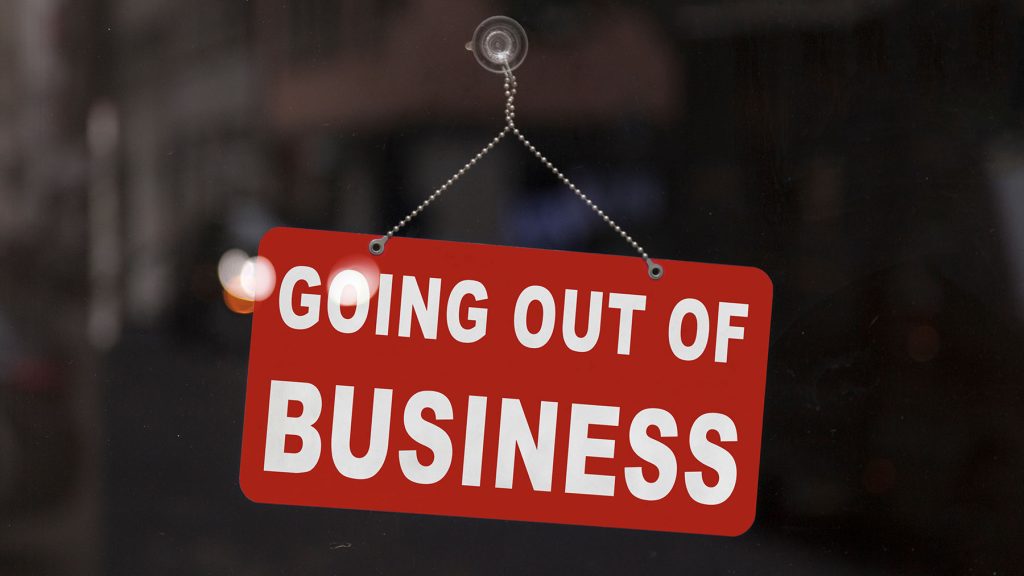
Starting a business is thrilling. The dream of being your own boss, making an impact, and building something from the ground up is what draws many into entrepreneurship. But here’s the sobering truth: most businesses don’t survive beyond their third year.
According to various reports, including data from the Ministry of Corporate Affairs in India and studies by Forbes and CB Insights, nearly 60% of small businesses shut down within the first 3 years. That’s a staggering number — and a reality check. But failure doesn’t have to be your story. The reasons businesses collapse are surprisingly predictable, and more importantly, avoidable.
Let’s explore why so many ventures struggle early on, and what you can do differently to give your business the best chance at long-term success.
The Dream vs. The Reality
Starting a business often begins with passion. Maybe it’s a talent you’ve honed, a market gap you’ve spotted, or a product you believe the world needs. But passion alone doesn’t keep a business afloat. The day-to-day of running a business involves more than delivering a product or service—it includes managing operations, understanding finance, navigating marketing, building customer relationships, and making hard decisions.
For many, this reality hits after the excitement of launch fades. And without preparation, the dream begins to unravel.
Common Reasons Businesses Fail
1. Lack of Market Need
This is the number one reason startups fail. Many businesses are built around ideas that excite the founder but don’t solve a real problem for the customer. Just because something feels like a good idea doesn’t mean there’s a sustainable market for it.
Take for example a boutique cupcake store that opened in a town saturated with bakeries, without offering anything distinctly different. The result? A few months of curiosity-driven sales, followed by a sharp decline. Understanding your market and validating demand is crucial before diving in.
2. Poor Financial Management
Cash flow problems are a silent killer. New entrepreneurs often underestimate how much money they need to sustain operations, cover unexpected costs, or survive low-revenue months. They also tend to overestimate early profits.
A business may look profitable on paper but still run out of cash if clients delay payments, expenses rise, or overheads balloon. Without a solid handle on finances—including a detailed budget and ongoing tracking—it’s easy to run into trouble quickly.
3. Weak Marketing or Branding
No matter how brilliant your offering is, it won’t sell if people don’t know about it—or don’t connect with it. Marketing isn’t just about running ads. It’s about building a brand people trust and a message that resonates.
Many businesses start with enthusiasm, launch a few posts on Instagram or create a basic website, and then… nothing. Crickets. Why? Because they haven’t taken the time to understand who they’re talking to or how to consistently engage their audience.
4. Trying to Do Everything Alone

Entrepreneurship can be lonely. And in the beginning, many business owners wear all the hats—sales, admin, marketing, delivery, customer support. But burnout is real. Without a team or support system, even the most passionate founders can lose steam.
What’s worse is when founders refuse to delegate or seek help out of fear of losing control or spending money. But trying to do everything alone often slows growth, limits innovation, and leads to exhaustion.
5. No Adaptability
Markets evolve. Customer needs change. Competitors improve. And if your business stays rigid in its ways, it risks becoming obsolete. Many early-stage businesses fail because they refuse to pivot or experiment with new models.
Think of companies that refused to adopt digital transformation or ignored e-commerce because their brick-and-mortar stores were doing “fine.” When the pandemic hit, they were caught unprepared.
How to Beat the 3-Year Curse?
Now, let’s flip the script. Just because many businesses fail doesn’t mean yours has to. Here’s how to stack the odds in your favor.
Know Your Customer Like You Know Your Best Friend
Before you build your product or service, spend time understanding who it’s for. What problems are they facing? What solutions are they already trying? Where do they hang out online? The more specific you get, the easier it is to craft a winning offering.
Use surveys, one-on-one interviews, or social media listening tools to gather insights. In India, for instance, tools like Typeform, Google Forms, and WhatsApp-based polls are great for gathering feedback from early adopters.
Prioritize Cash Flow Over Vanity Metrics
Revenue is not profit. Likes are not sales. If you’re selling products, understand your margins. If you’re offering services, account for your time and hidden costs like software, subscriptions, or internet bills.
Keep your fixed costs low in the beginning. Use tools like Zoho Books, QuickBooks, or even Google Sheets to track every rupee that comes in and goes out. Always plan for at least three months of runway.
Build a Brand, Not Just a Business
Your brand is the emotional connection people have with your business. It’s more than a logo or color scheme—it’s your tone, your values, your story.
Consistency across platforms builds trust. Whether you’re posting on Instagram, emailing a client, or printing flyers, keep your messaging aligned. Even as a small business, showing up professionally makes a big difference.
Build Systems Before Scaling
You don’t need a huge team, but you do need systems. Document your processes early—how you handle orders, how you reply to inquiries, how you schedule appointments. This helps you outsource or hire when the time comes without reinventing the wheel.
Simple tools like Trello, Notion, or Airtable can help you stay organized, even as a solopreneur.
Stay Curious, Stay Adaptable
Entrepreneurship is a constant learning curve. What worked in year one might not work in year two. Don’t fear change—embrace it. Listen to your customers, keep an eye on competitors, and experiment with new offerings or pricing models.
Remember, adaptability isn’t weakness. It’s a strength that allows your business to thrive in any climate.
Final Thoughts
The first three years of any business are full of ups, downs, lessons, and growth. Failure is common — but not inevitable. With the right mindset, tools, and strategies, you can navigate the chaos and emerge stronger.
Think of your business like a plant. It needs the right soil (strategy), sunlight (customers), and water (cash flow). Neglect any of those, and it might wither. But nurture it consistently, and you’ll watch it grow beyond your wildest expectations.




!["Failures are the stepping stones to success" is a Cliche now! [How to make this work?] How to make a failure work?](https://www.janesheeba.com/wp-content/uploads/2024/02/failure-3096213_1280-150x79.jpg)

Leave a Reply